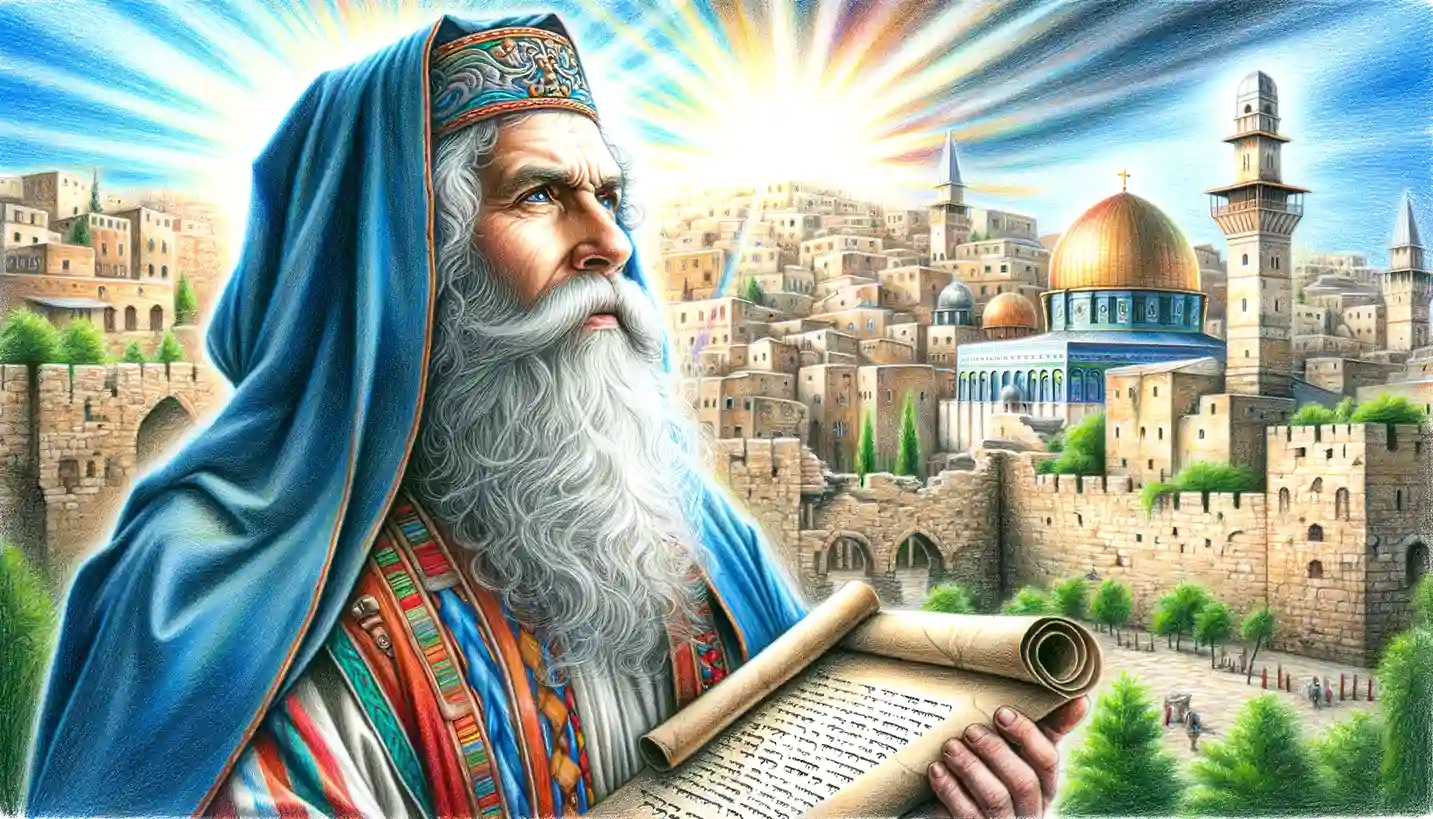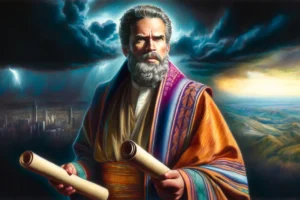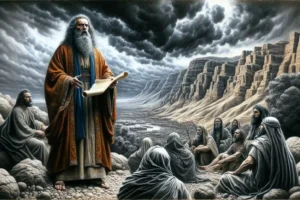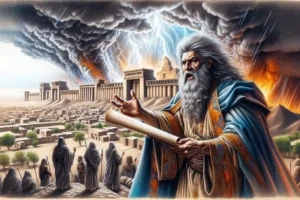
Zechariah: Prophet who had Visions of the Restoration of Jerusalem
Zechariah was a prophet who ministered to the people of Judah after their return from Babylonian exile. He is known for his apocalyptic visions that offer hope and a future restoration of Jerusalem, emphasizing God’s sovereignty and the coming of the Messiah.
Quick Facts:
- Historical Context: Zechariah prophesied during the post-exilic period, around 520-518 BC.
- Contemporary of Haggai: His ministry coincided with that of the prophet Haggai.
- Book of Zechariah: Comprises 14 chapters, divided into two main sections.
- Eight Night Visions: Central to his prophetic message, offering reassurance of God’s plans.
- Messianic Prophecies: Includes prophecies about the coming Messiah and the future King.
- Rebuilding the Temple: Encouraged the completion of the Second Temple in Jerusalem.
- Symbolic Actions: Used symbolic actions to convey God’s messages.
- Vision of the Four Horns and Four Craftsmen: Signifying the defeat of Israel’s enemies.
- Vision of the High Priest: Joshua, representing the cleansing and restoration of Israel.
- Vision of the Lampstand and Olive Trees: Symbolizing God’s Spirit empowering Zerubbabel.
Historical Context
Zechariah’s ministry took place during a crucial period in Jewish history, shortly after the return from Babylonian exile. This was a time of rebuilding and restoration for the Jewish community in Judah. His prophetic career began in the second year of Darius the Great, around 520 BC, when the Jews were struggling to rebuild the temple and restore their society.
Contemporary of Haggai
Zechariah was a contemporary of the prophet Haggai. Both prophets urged the people to complete the rebuilding of the temple, which had stalled due to opposition and apathy. While Haggai focused on immediate practical issues, Zechariah’s messages were more visionary and future-oriented.
Structure of the Book
The Book of Zechariah is divided into two main sections: Chapters 1-8 contain visions and messages related to the immediate situation of the Jewish people, while Chapters 9-14 contain more apocalyptic and messianic prophecies. The first section addresses the concerns of the returned exiles, while the second section looks forward to a more distant future.
Eight Night Visions
Central to Zechariah’s prophetic ministry are the eight night visions, which he received in a single night. These visions include:
- The Man Among the Myrtle Trees: Symbolizing God’s return to Jerusalem with mercy.
- The Four Horns and Four Craftsmen: Representing the defeat of Israel’s oppressors.
- The Measuring Line: Indicating the future prosperity and expansion of Jerusalem.
- The Cleansing of Joshua the High Priest: Symbolizing the removal of sin and the restoration of the priesthood.
- The Golden Lampstand and Two Olive Trees: Representing Zerubbabel and Joshua, and God’s Spirit empowering them.
- The Flying Scroll: Depicting the curse over the land due to sin.
- The Woman in a Basket: Symbolizing the removal of wickedness from the land.
- The Four Chariots: Representing God’s judgment on the nations.
These visions reassured the people of God’s continued presence and plans for their future.
Messianic Prophecies
Zechariah’s prophecies include significant messianic elements. He foretells the coming of a humble king riding on a donkey (Zechariah 9:9), a prophecy fulfilled by Jesus during His triumphal entry into Jerusalem. Zechariah also speaks of the “Branch” (Zechariah 3:8; 6:12), a term that Christians interpret as a reference to the Messiah.
Rebuilding the Temple
One of Zechariah’s primary concerns was the completion of the Second Temple. His messages encouraged Zerubbabel, the governor, and Joshua, the high priest, to continue the work despite opposition. The rebuilding of the temple was a critical step in the restoration of Jewish worship and community life.
Symbolic Actions
Zechariah often used symbolic actions to convey his messages. For instance, the crowning of Joshua the high priest (Zechariah 6:9-15) was a symbolic act pointing to the future harmony between the priesthood and the kingship, ultimately fulfilled in the Messiah.
Vision of the Four Horns and Four Craftsmen
This vision (Zechariah 1:18-21) symbolizes the powers that scattered Judah and the forces that will overthrow them. The “horns” represent the nations that oppressed Israel, while the “craftsmen” are the divine agents of judgment against these nations.
Vision of the High Priest
In the vision of Joshua the high priest (Zechariah 3:1-10), Joshua is shown standing before the angel of the Lord, with Satan accusing him. God rebukes Satan and commands that Joshua’s filthy garments be replaced with clean ones, symbolizing the cleansing of Israel from sin and their restoration as a holy people.
Vision of the Lampstand and Olive Trees
This vision (Zechariah 4:1-14) features a golden lampstand flanked by two olive trees, representing Zerubbabel and Joshua, who are empowered by God’s Spirit. The message, “Not by might nor by power, but by my Spirit” (Zechariah 4:6), emphasizes that the rebuilding of the temple and the restoration of the community would be accomplished through divine, not human, strength.
Legacy and Theological Significance
Zechariah’s prophecies provided hope and encouragement to the Jewish people during a time of uncertainty and struggle. His visions reassured them of God’s presence and plans for their future. The messianic prophecies in Zechariah have profound theological significance, pointing to the coming of Christ and the ultimate fulfillment of God’s promises. Zechariah’s emphasis on spiritual renewal, divine empowerment, and future glory continues to inspire and challenge believers today.
In conclusion, Zechariah was a pivotal prophet whose visions and messages offered hope and direction during a critical period in Jewish history. His prophecies not only addressed immediate concerns but also looked forward to the coming of the Messiah and the ultimate restoration of God’s people.



